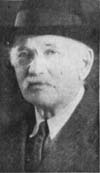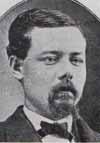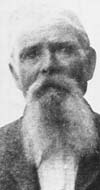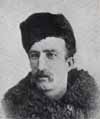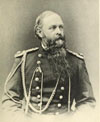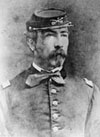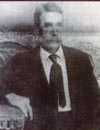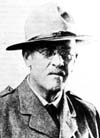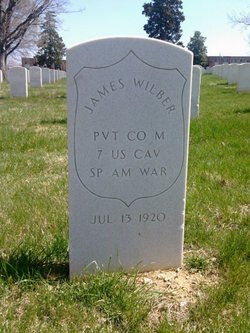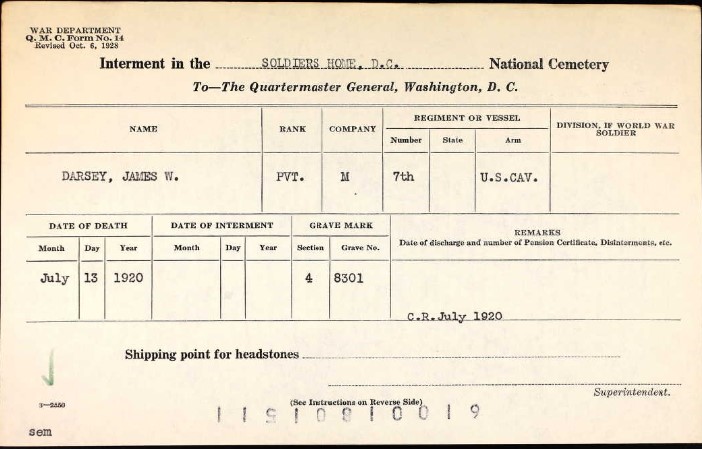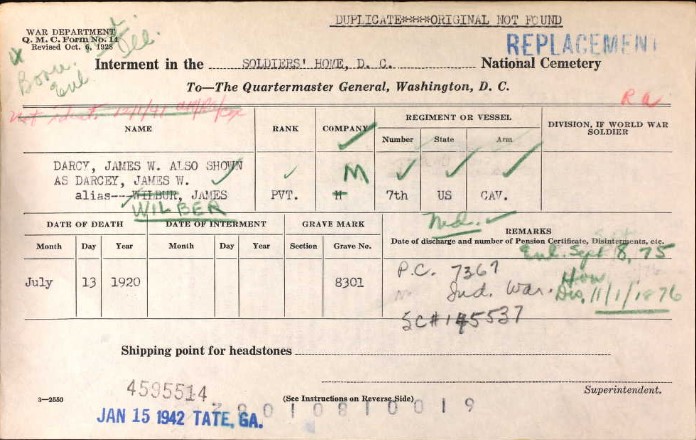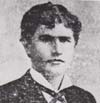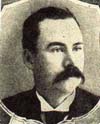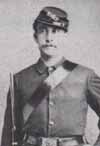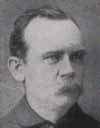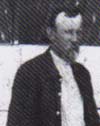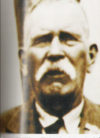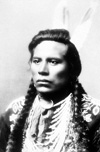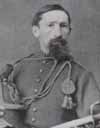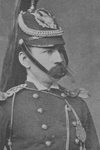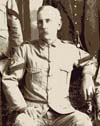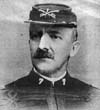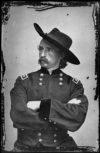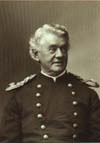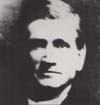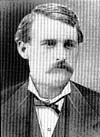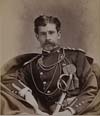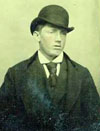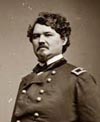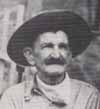Edmund Henry Burke was born in Manchester, England, on August 10, 1842. He was the son of Pat and Mary Crahen Burke. He was a Blacksmith for Company K who participated in the hilltop fight during the Battle of the Little Bighorn. He married Mary Ann Collins in 1877 in St. Paul, Minnesota, and they lived in Frederika, Iowa, from about 1880 until Mary Ann’s death in 1912. He later lived in Bremer, Iowa, and Sumner, Iowa, where he died in 1925.
Edward Davern died on August 10, 1896, in Washington, D.C., and was buried in Arlington National Cemetery in nearby Virginia. He was a Private in Company F who served as an orderly for Major Reno. He participated in the valley and hilltop fights where he was wounded.
Philipp Spinner died at Camp Douglas, Wisconsin, on August 12, 1895, and was buried in the Fort Sheridan Cemetery in Highwood, Illinois. He was a Private in Company B who participated in the valley and hilltop fights.
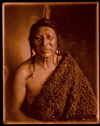
White Swan (left) died on the Crow Agency in Montana on August 12, 1904, and was buried in the Custer National Cemetery there. He was an Indian Scout who participated in the valley and hilltop fights where he was wounded.
Thomas Hughes, who was also known as Charlie Hughes, died on August 12, 1911, in Nashville, Tennessee, and was buried in the Nashville National Cemetery there. He was a Private in Company H who was wounded in the hilltop fight.
Roman Rutten (who was also known as Roman Ruttenauer, Rutler, Rullin, and Bolten) was born on August 13, 1846, in Baden, Germany. He was a Private in Company M who fought in the valley and hilltop fights. He was wounded on Reno Hill.
Morris Cain died in Colville, Washington, on August 13, 1906. He was a Private in Company M who fought in the valley and hilltop fights.
Thomas Carmody died of cancer on August 13, 1912, in New York City and was buried in Calvary Cemetery in Woodside, Queens. He was a Private in Company B who was with the pack train and participated in the hilltop fight.
Fred E. Allan, who was also known as Alfred Ernest Allen, was born in Melton Mowbray, Leicestershire, England, on August 14, 1847. He was a Private in Company C who was killed while fighting with Custer’s column.
Charles H. Houghtaling died on August 14, 1881, at Fort Lewis, Colorado, and was originally buried in the Post Cemetery there. He was later reinterred at the Fort McPherson National Cemetery in Maxwell, Nebraska. He was a Private in Company D who participated in the hilltop fight.
James Hill was born in Edinburgh, Scotland, on August 15, 1826 or 1833. He was the First Sergeant in Company B who was with the pack train and participated in the hilltop fight.
